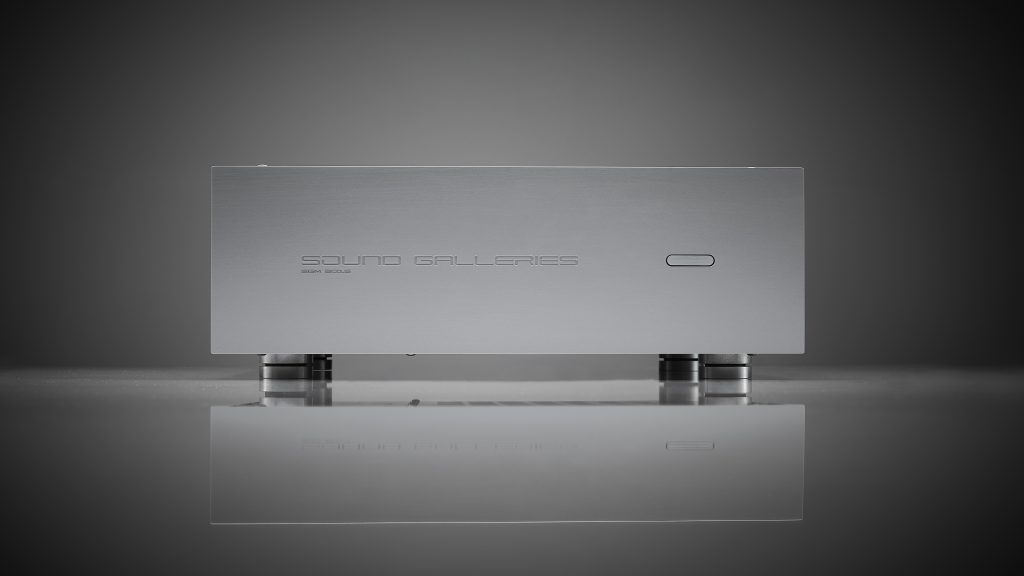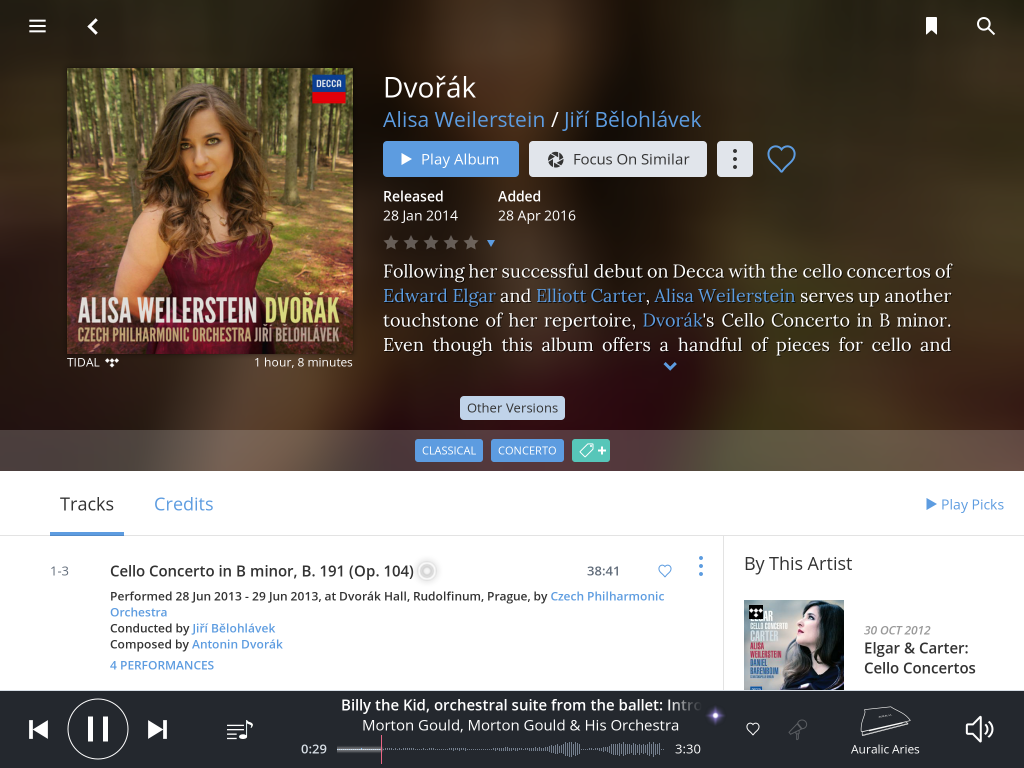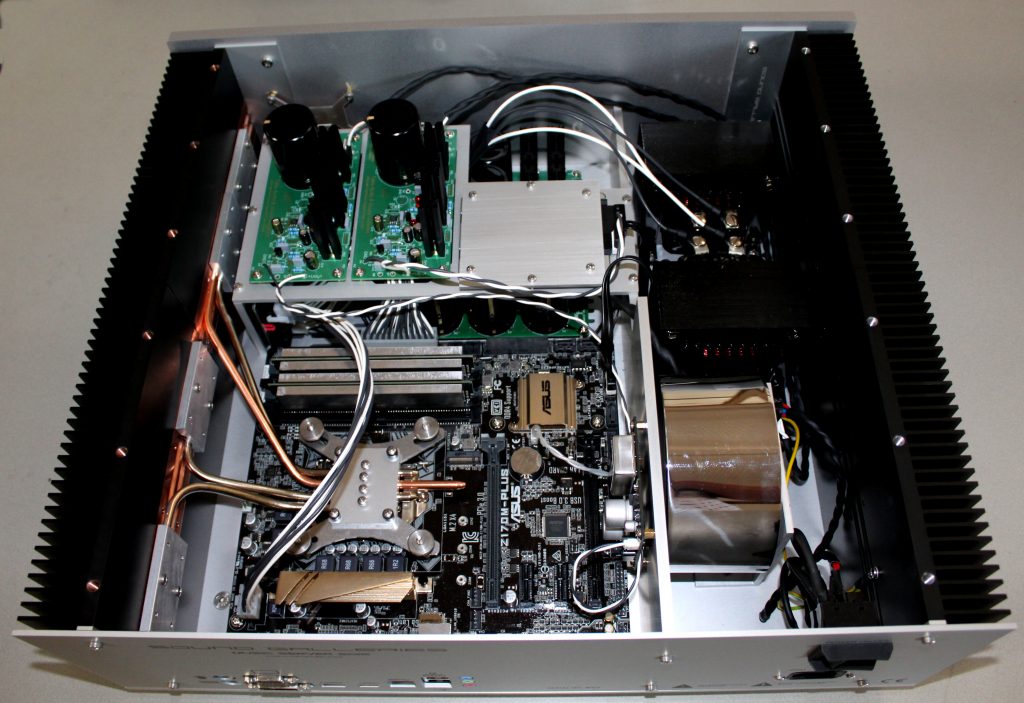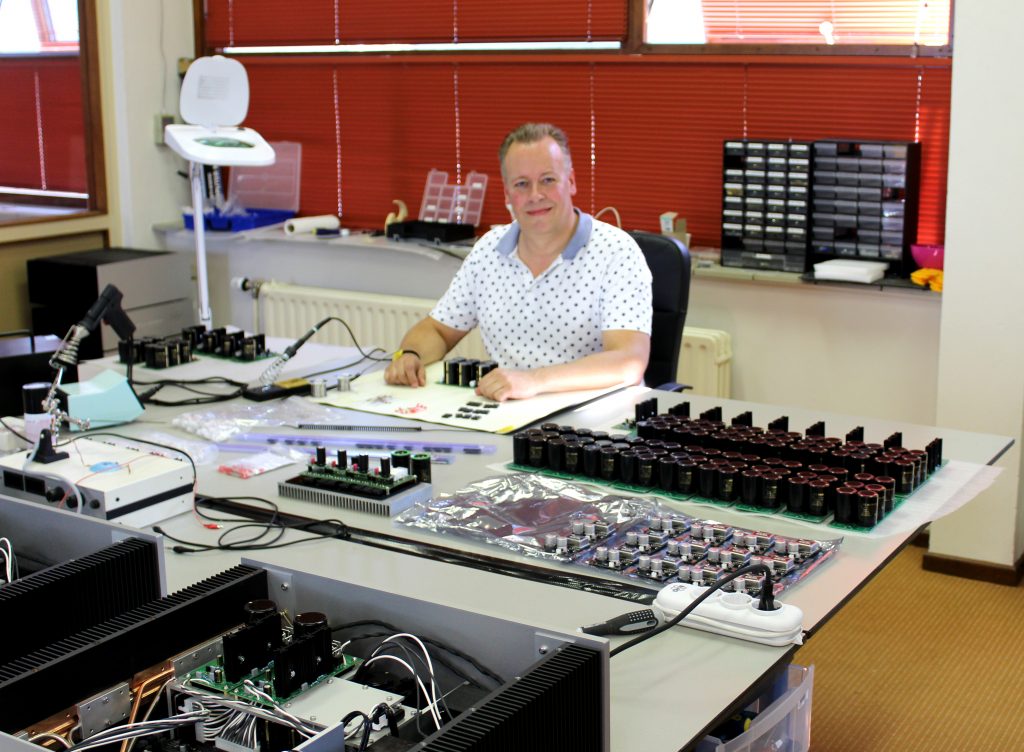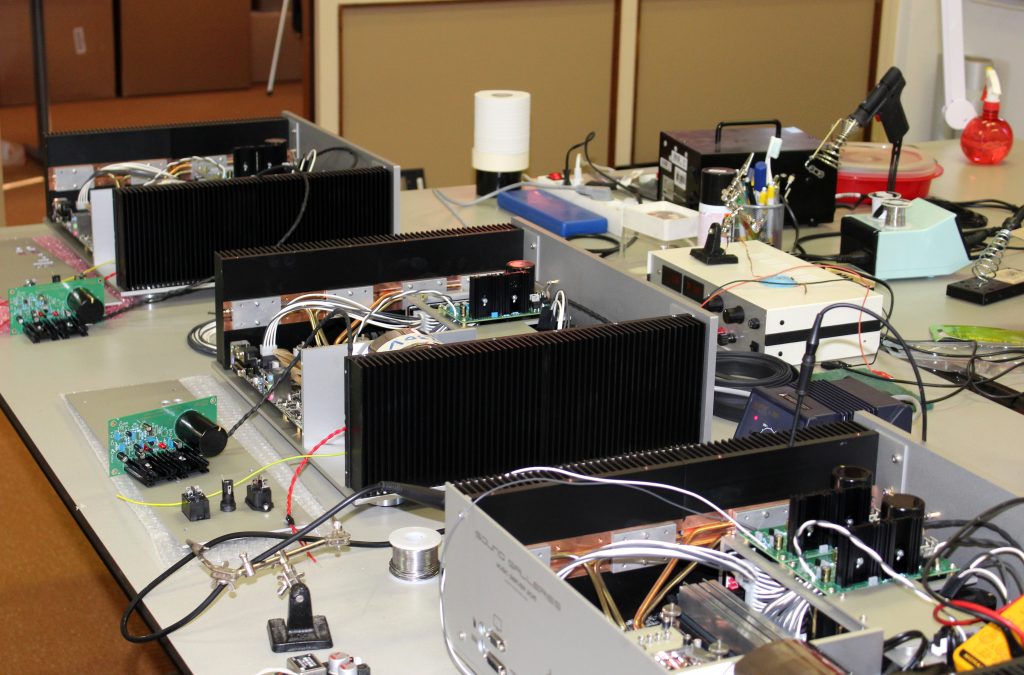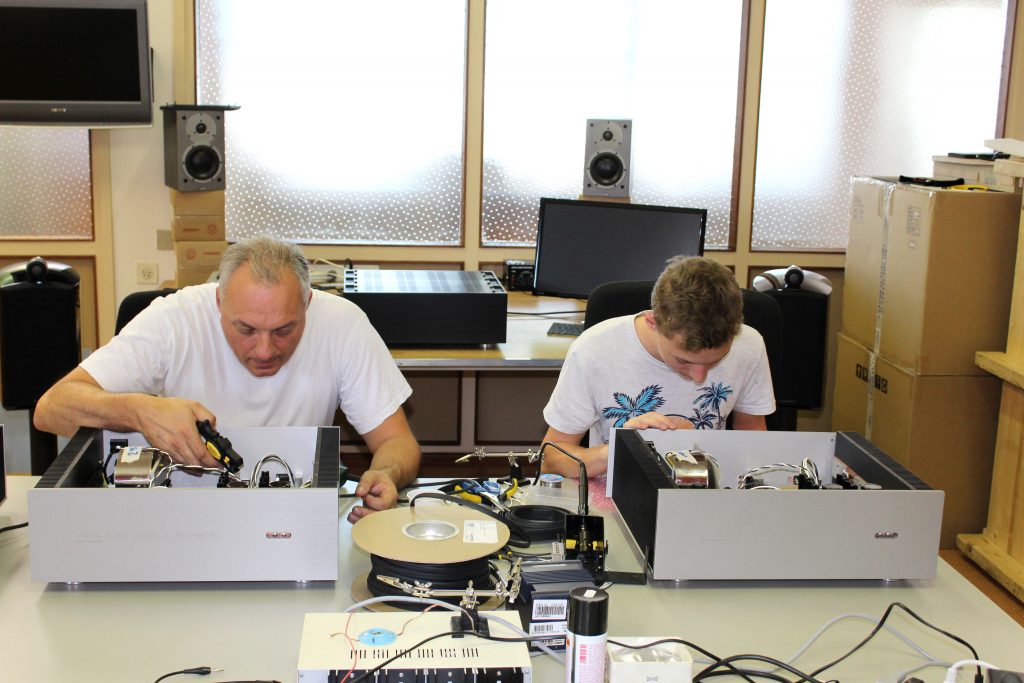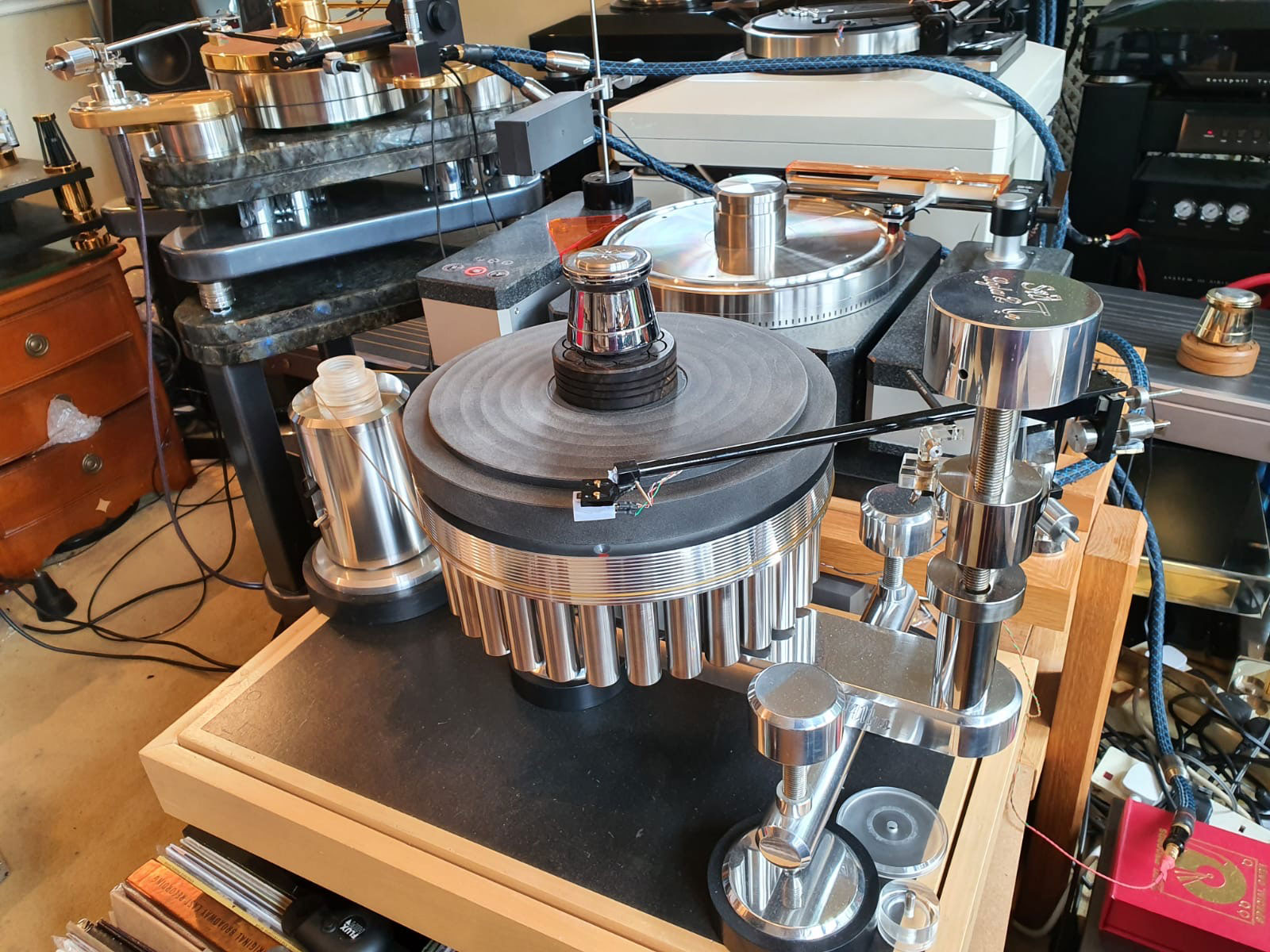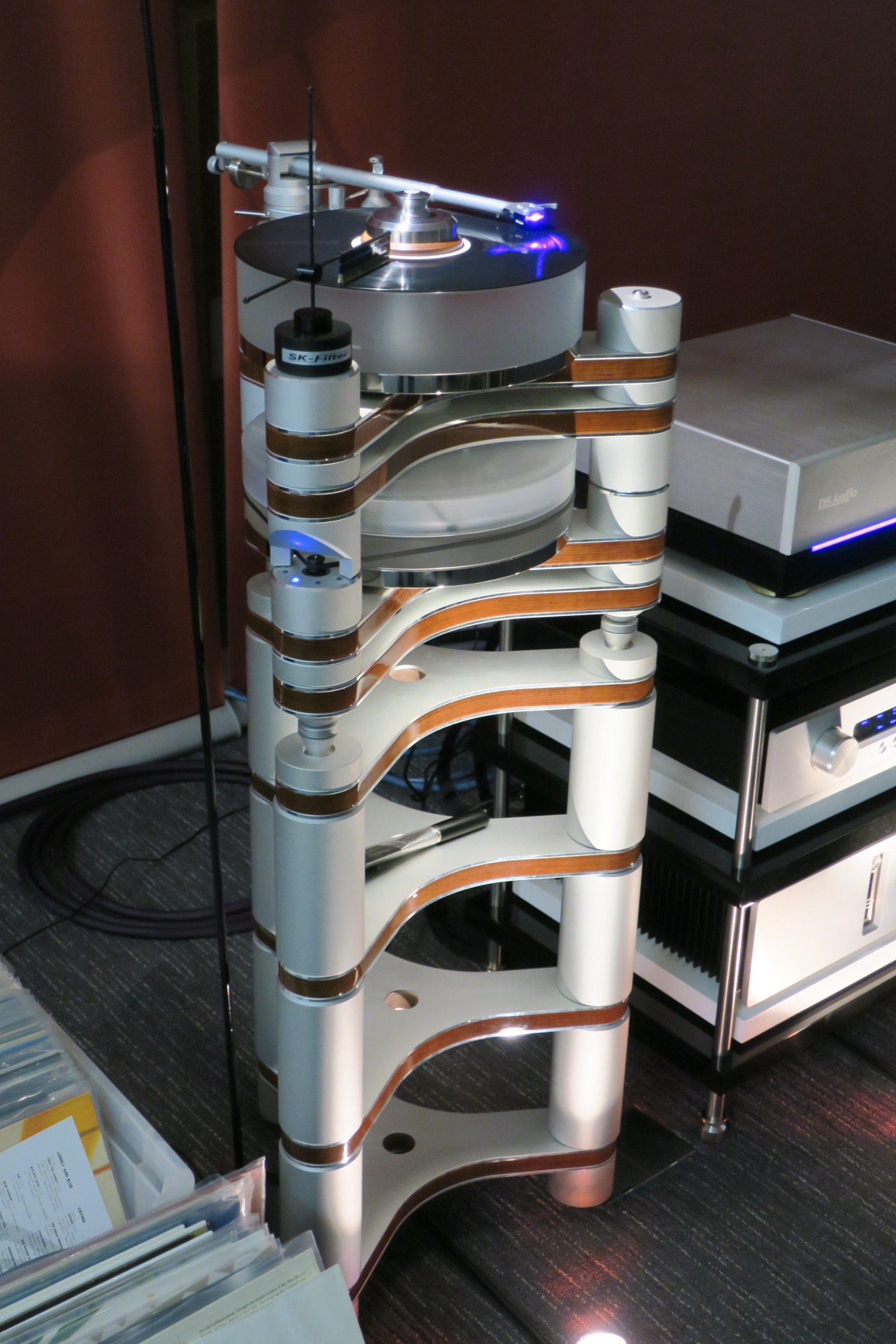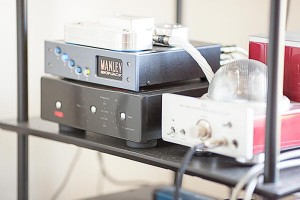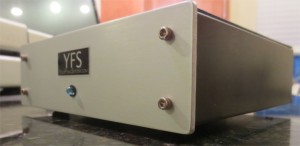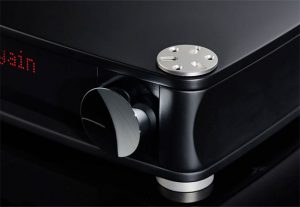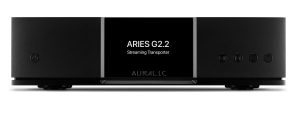I first seriously embraced the advantages inherent in computer audio when Linn released their first iterations of the DS range of ethernet based streamers and dropped CD players altogether. I felt instantly liberated with access to my entire digital library at the hands of my iPad. At first my brain went into complete overdrive as I took the role of a deranged DJ jumping erratically around my library with gay abandon—it was strangely exciting. That said, I think it is fair to say that the interfaces (both media servers and control software) on offer at the time were fairly crude and not without considerable hiccups for many end users. Indeed whole fora were awash with threads about network problems, configuration of NAS drives, crashing apps, etc. Nonetheless, despite some initial pain, the early adopters recognised not only the audio quality potential but also the way that this would ultimately shape the way that future audiophiles would interact with their music.
I continued my journey with the Devialet D Premier, a very tidy little package, offering an all in one "state of the art" solution. Alas, again the AIR interface at the time was the topic of many frustrated audiophiles and continues to be the case judging by the large number of signatures on an online petition to rectify this issue. I personally resorted to employing a Squeezebox Touch to interface with my Devialet, which was a workaround that degraded the sound versus other solutions such as the Auralic Aries; another preferred interface for Devialet owners at the time.
Why am I recalling my past experience and how is it relevant for this review?
Computer audio can be wonderfully rewarding and provide extremely high quality reproduction but the amount of hours of my life wasted in getting there has proved very challenging. As such, I have become totally intolerant of computer based products that are not designed and implemented to be bomb proof from start to finish. I am not willing to entertain short cuts—I want a product that maximises the limited hours available for unadulterated listening pleasure and I want a product with the highest fidelity. My acquisition of the Auralic Aries as a vehicle to drive my Golden Gate DAC achieved this proposition without fault—never skipping a beat and as reliable as my cat, Monty, for his dinner. In musical terms, metronomic! As such I think it is fair to say that I carry significant baggage when reviewing computer products and intolerant of anything less than perfection.
What is the general SGM approach to computer audio and how does it fit within my system?
The SGM is an extremely versatile transport. The user may either store their music catalogue on the internal SSD or let the SGM talk to a network attached storage (NAS) drive over your home network or both. In addition, the SGM incorporates Tidal via the Roon interface which allows one to stream lossless music to your home with a monthly subscription. All this music, no matter where it comes from, is interfaced through Roon, which is simply the best music management software on the planet in my opinion. The chasm between Roon and other current interfaces, let alone those of yesteryear, is vast. Roon is then controlled with a tablet (such as ipad). The USB output of the SGM is then connected to your DAC and you are away. The SGM has video outputs (RS232 and HDMI) to connect to a monitor if you wish to delve into the filter settings within Hqplayer, which I strongly recommend that you do but more on this later. You can also run fully headless and change filters using Team Viewer App, which works flawlessly.
How is the SGM different from other server devices such as those from Aurender and Melco?
The SGM differs in many ways to these other products, which will be discussed further in this review. However, for those who don't care for the detail, fundamentally the SGM is designed, above all, to offer the end user unparalleled audio performance via the use of HQ player software that will enable any format from any medium to be upsampled to DSD512, state of the art clocks on the motherboard, obscenely over specified audiophile power supplies with high quality Mundorf capacitors, a custom configured Windows 10 operating system, and a horrendous number of hours listening and customising everything contained within the monstrous chassis.
Detailed Overview of the SGM
I had no idea what to expect when the delightful Edward Hsu parked up on my drive. He burst out the car with intense excitement and I could literally feel the passion flowing from his being as he started to talk about his "baby." Oh, and "baby" it isn't unless your idea of a baby is the lovechild of a Boulder 3050 and a Krell MRA. In all seriousness, I lifted the SGM out of Edward's car... it is 33kg and the size of a large solid-state class A power amplifier. I happen to have a thing about large solid-state amps, so I immediately fell in love. It isn't all bulk though—fit and finish is absolutely first class and you will definitely feel a great pride of ownership. If you care to peer inside the top chassis (I urge you to), you might get a glimpse of the enormous custom CNC'd copper heat sink or the epic 2 x 3.2kg inductors—I did say this was a computer server not a power amp didn't I?
Without even a moment to drink or eat after an entire day of travel, Edward excitedly charged forth to the listening room.
Right let's get into the techy bit... here is a rundown of the specs:
- Processor: Intel Skylake i7 6700K
- Memory: 16GB DDR4
- SSD: 1TB (Can be upgraded to 2TB, 4TB @ additional cost)
- 5ppb stability OCXO with low noise power supply replacing the motherboard system clock
- Low noise dual choke power supply for computer motherboard and CPU
- Low noise, high frequency power supply for SSD
- Mundorf Mlytic capacitors with 660,000 microfarads storage capacity
- Steel potted power supply transformer with internal copper foil shielding
- High performance RAM with custom aluminum heat sinks
- Heatpipe cooling system for CPU connected to copper billet CNC milled heatsinks allowing fanless high load operation with CPU overclocking
- Optimized BIOS settings for CPU and RAM
Translating into real terms, this machine has some potent horsepower and doesn't even blink when going full bore with PCM to DSD512 up-sampling on the fly with the most complex modulators in HQ player. That is no mean feat because as far as I know, no other commercially available audiophile server can do this—moreover, it requires no fan and is deadly silent. Emile Bok, the audio-mad Dutch engineer involved in the SGM project gleefully tells me that it will have no problem doing DSD1024 on the fly should and if a DAC with USB interface be capable of this resolution. At the time of writing, no such DAC exists to my knowledge. The latest Emm Labs DAC can't accept DSD above 128 over USB as far as I am aware despite internal upsampling to 1024.
Emile Bok assembling an SGM
Interview with the design team
Positive Feedback: Congratulations team on a wonderful product. The performance I am experiencing with both the T+A DAC 8 DSD and Lampizator Golden Gate is truly astonishing. I am mindful that you wouldn't want to divulge commercial secrets but I would really appreciate learning more about why you selected various pieces of hardware and software.
Please could you talk me through the choice of processor and RAM—how important is this and why did you use the Intel i7 Skylake 6700K & 16GB DDR4 RAM?
SGM Team: Bill thank you for your enthusiastic feedback, it makes the intensive hours of experimenting and testing over the past year all worthwhile.
What's interesting about HQ Player doing real-time conversion of PCM to DSD 256 and 512, is that higher CPU core speed improves the sound quality of the DSD stream that is being created by the HQ Player DSD modulator algorithms. We don't know the exact structure of the algorithms that Jussi Laako has written, but we do know he consistently pushes the computational limits on processing accuracy, with the output of each processing stage having 64-bit floating point precision. This means in some input stages, he needs 80 bit floating point accuracy, which no commercial complier provides, so he has written his own 80 bit floating point processing code in assembler language. All this computational heavy lifting is happening in real time, with bits being delivered with a frequency of about 24MHz at DSD 512, it means that HQ Player has to do the calculations in a hurry to fit in the time slot available. What's nice about Skylake is the implementation of Hyperthreading is much better than it was in Haswell, with the virtual CPU core processing load capability close to 50/50 which was not previously the case. If you look at benchmark tests of similar Skylake and Haswell CPU's there is only about a 5 percent improvement, but for HQ Player the sonic difference is very big and very audible.
We chose the 6700K model, as this CPU allows us to run at the highest possible clockspeed. There is quite a bit more heat thrown off running at 4.2 GHz, but the CNC machined copper heatsinks can handle that.
We tested pretty much all of the potentially attractive DDR3 and DDR4 RAM sticks and selected the best sounding ones. We also remove the stock heat sinks, and install our own.
Positive Feedback: Okay thanks, that makes considerable sense. Why did you implement a super accurate 5pp billion OCXO on the motherboard? Does this actually make any difference? Aren't we limited by the clock on the dac USB interface?
SGM: At last year's Munich High End, I bumped into a very renowned Digital Electronics pioneer, and I described to him what HQ Player software did to convert PCM to DSD in realtime. He said to me "that's very interesting but the control of the jitter is very important, and very difficult to do." The next morning in the shower I reflected on his words, and then the penny dropped. With HQ Player doing PCM to DSD conversion, and the 1-bit data stream being fed to a DSD converter, which in some cases could be a simple FM demodulator, the actual / functional Digital to Analog conversion is not going on in in the DAC, but in software, in the PC, in PC clock time. This realization started the experimentation with replacing the computer motherboard clock with more short term frequency stable types including TCXO, and OCXO's of with different frequency stability specs. From our extensive testing of motherboard clocks, the sound improvements are coming from three sources, the high frequency power supply we power the clock with, the lower low frequency phase noise of the crystal, and the greater short term frequency stability. A very interesting effect is we achieved a 6% reduction in total system power consumption and a 2 degree Celsius overall lower operating temperature depending on the clock model and its surrounding circuitry. The OCXO that we finally selected is from a major US supplier, and is the most frequency stable one that they make. It is only available by custom order, with a substantial lead time. The sound quality improvement is not as huge as we get from pushing the RF noise floor down, but it brings a pristine quality to the sound and a coherence, that our other customizations don't bring. For us on the team, it's a must have.
In our tests of USB clock replacements and several aftermarket USB reclockers, we have found nearly all of them to be sound quality beneficial on standard PC's, but not on the SGM.
Positive Feedback: I have always felt that well implemented linear power supplies are crucial to the overall sound in computer audio. I am aware that many audiophiles employ custom made linear power supplies with devices such as the Regen and get nice lifts in subjective performance. Please can you tell us more about the design choice of the SGM power supplies—they look very impressive?
SGM: We designed a very large dual choke filtered power supply to feed the computer motherboard. The power demands of a top model Skylake processor doing heavy computation varies a lot and very quickly. Our supply is able to keep up with the fluctuating power demand. The ripple spec is in the single digit microvolt range and the large chokes are very competent at filtering noise from the audio band. High frequency noise sensitive components are powered by a custom made super-regulator.
Positive Feedback: I am aware of the countless hours that the SGM team have poured into this project and the sheer passion that is conveyed in the build. What other aspects of the SGM design yield such superlative performance—Edward mentioned that literally no stone was unturned and the design goal here was audio performance, cost no object.
SGM: There have been things that we have done on the hardware side to improve the sound, but if we published the details we would be ridiculed by many in the industry. So we bite our lips and let customers hear the product.
We have put many man hours into optimizing the operating system. It was relatively easy to have a good sounding OS when HQ Player was running by itself, but with a very busy Roon Core program running simultaneously, getting a top notch sound was extremely challenging. Our custom Windows 10 build has more than 70% of the Windows processes stripped out and we had Process Lasso which allowed us to re-allocate cores and optimize process priorities between the Roon and HQ Player programs, which allowed us to achieve an extremely satisfying quality of sound with a ease of use that makes us all happy users
Positive Feedback: Not all audiophiles can or want to be computer savvy. Ongoing support is very important indeed for the end user—how do SGM propose to support their customer base?
SGM: We expect nearly all SGM customers will operate the SGM from a 64-bit iPad or Android tablet. Using a free VNC remote app on the tablet, the customer will be able to double click a shortcut on the SGM desktop which will launch a session of TeamViewer. The customer just needs to email us ahead of time and we will access the SGM over the internet and troubleshoot the unit or update his machine such as installing a new USB driver when the customer is changing his DAC. Another instance where we would go online to help and configure Roon to recognize and index a newly installed NAS on his network
The only options at the present time are to upgrade the 1TB SSD to a 2TB SSD or a 4TB SSD.
How does it sound?
My testing was based 75% of the time using the T+A Dac 8 DSD in order to be able to enjoy the full benefits of octuple DSD up-sampling. The rest of my time was spent using my resident Golden Gate dac. It is important to add that your DAC need not be capable of these extreme DSD rates to enjoy the benefits of the SGM but for the purposes of the review, I wanted to go full hog.
I spent a full two weeks listening to the T+A driven by my Auralic Aries, Windows 10 laptop via Ifi Audio iusb, Tascam DA3000 (AES/EBU), and Oppo (S/PDIF). This allowed me to calibrate my ears prior to evaluating what the SGM brings to the party. My initial impressions of the T+A DAC driven by my usual selection of transports was competent @ the price point for PCM and better than its price point for DSD. In truth, it was a fairly large step down from my resident Golden Gate as you would expect at ~20% of the price.
After firing up the SGM and dialling in the HQ player filters that were recommended to me by the SGM team, I began my listening with my usual audition tracks. I am not going to focus here on all the different filter options available in HQ Player—instead I would encourage you to visit the HQ Player and / or visit Computer Audiophile forum as there are some great threads by the designer, Jussi, to explain the relative merits of different filters based on your preference. What I will say is that filter settings give the user great choice to be able fine tune the end product to their exact taste. Of course, you can merely leave it on the SGM team's recommended settings and get on with your life but I bet 99% of owners will have a tinker—would be rude not to.
At a macro level, the level of noise is the lowest I have ever heard in my system—this allows the system to illuminate recording details hitherto lost in electrical hash. The details that I speak of are reproduction of recording space and minute cues such as a musician moving in their seat or turning a page. This level of resolution is wonderful as it allows one to be teleported to the recording venue and literally connected with their favourite artist. I can't emphasise this enough though as the additional resolution is large—I am not talking about a small improvement. "Interesting" you might think but detail can sometimes come at the expense of musicality. In this instance, it absolutely did not as it revealed additional musical nuance that accentuated the performance. A great example of this was during my listening session of Benjamin Grosvenor playing Ravel's "Undine" from Gaspard de la Nuit. The listener enters the dark fantasy world painted by Ravel of Undine, the water nymph, luring onlookers to her dirty lair in the abyss. Delineation of each note within the fast right hand passages that vividly depict the ebb and flow of water was crystalline with the SGM and allowed the music to hang and float with great beauty. Moving onto "Chopin Nocturne No. 5" in F sharp on the same album presented tiny timing variations on the pedals that just oozed musicianship and made me realise just what a talent this British prodigy is as a pianist.
The incremental timing gains that I witnessed time and again are unique to the SGM. I hadn’t ever experienced a transport that was able to confer such gains in minute timing variations in a performance before. This attribute is so fundamental to musicianship, I feel that this makes the SGM very special.
So at this point, I think it is fair to say that the resolution is simply extraordinary and redefines for me what information is still locked away from the audiophile. I am not sure I have ever heard resolution from any source at this level previously—it is remarkable. I have no way of knowing this but I believe the meticulous attention applied to the clock accuracy and power supplies allow the SGM to unearth this class-leading retrieval of information.
To audition the tonal qualities of systems, I have to say that I am biased towards at least starting with strings because I feel it is a very tricky test. My Golden Gate has always excelled in this area providing rich and full bodied cello and silky fiddles. I have recently developed a huge admiration for Leonidas Kavakos, having been transfixed by a performance of the Sibelius by way of Berlin Digital Concert Hall. His most recent album, Virtuoso, is a great starting point for newcomers. Listening to "Reveille" by Britten on the SGM allowed a gorgeous violin tone to emerge that simply wasn't available with the T+A driven by my usual transports. I am almost certain that this is attributable to the modulators used in HQ player. The tone is fully extended with lively overtones that can otherwise be extinguished by some rolled off systems—the lower registers carry body just as they should. The resolution of the SGM allows one to hear that immediate connection of the bow to the string that can be smeared and lost with less resolving DACs. This makes the fast passages full of life and drama and raises the adrenaline of the listener. Tympani, brass, and woodwind all exude very realistic tone that is true to the source. The Golden Gate in this instance (also driven by SGM) is warmer, more harmonically rich, and weightier sounding albeit at less resolution and speed.
How does the SGM combined with T+A carry the full orchestral weight? The first thing you notice is a cavernous soundstage that is wider and deeper than I am normally accustomed to. It does not project forward and backwards (3D) as much as with the Golden Gate but reaches wider beyond my speakers and sits locked in well behind my speakers. The infamous Reference Recordings Danse Macabre is my usual weapon of choice to illuminate a systems ability to handle scale, dynamics and delineation of orchestral sections. My last listening session with Mark Coles from Sablon Audio (UK - London & home counties dealer), who had just designed a new signal only USB cable prototype, let me hear this recording with extraordinary fidelity. It was easy to pick out each instrument and section even in full swing and the explosiveness of the crescendos was enough to make you jump. The triangles had that incredible ringing sound that is so difficult to achieve—I always felt the Focal's Beryllium tweeters did this very well, but this was the best that I had heard.
Can this thing rock out?
The SGM and T+A pairing had great leading edge speed that gave real zip to snares no better demonstrated at the hands of Neil Peart in my Rush auditioning. The SGM and T+A delivered bags of energy at the listener and leaves the atmosphere charged and ripe for air drumming and head banging. I smiled as my friend Marc air drummed away to Rush's 2112 like a man possessed.
I always like to test kit out with Daft Punk, Kraftwerk, and Yello as a means of determining the ability of the system to handle hard repetitive bass. Playing "Till Tomorrow" from the Yello album Touch was frankly absurd with my room virtually vanishing from the equation. My walls and boundaries seemed to disappear and the room lock was astonishing. My newly acquired Analog Domain M75 amplifier swaggers up to my evil load Maestros and throws them around like a rag doll—this combined with the SGM and T+A was dynamite.
Conclusion
Is this the best digital transport on the planet? I can't yet answer that question without hearing more out there but suffice it to say that the extraordinary improvements that are wrought by the addition of the SGM to the T+A are orders of magnitude higher than I ever considered possible and far higher than any transport I have ever heard. The pristine resolution illuminated by the SGM is state of the art and the tonal changes in the DAC that are a result of the exceptional HQ player algorithms make me conclude that if you are in the market at this price point, you would be foolish not to audition the SGM server. If you think you have "heard" your DAC, be prepared to be blown out of the stratosphere with what this beast can do. Very highly recommended.
Price: 16,000 euros (introductory price – to increase in next 6 months)
Sound Galleries
+377 97 98 32 60




